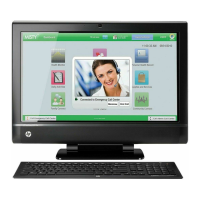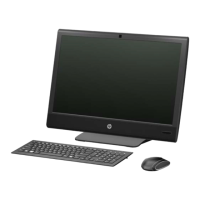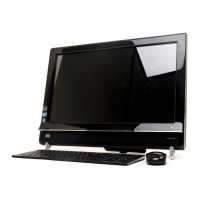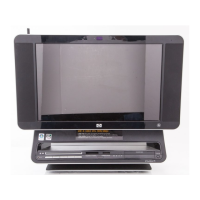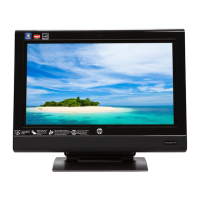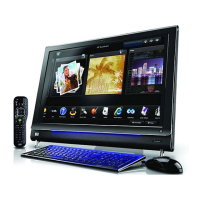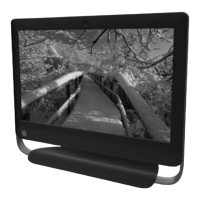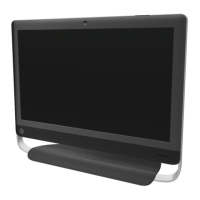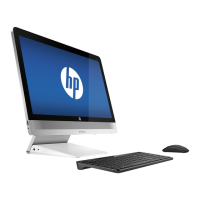Why does my HP Desktop reject or stuck 8 cm optical discs?
- JJohn SmithJul 26, 2025
If 8 cm optical discs are rejected or become stuck in the drive, make sure to insert the disc in the center of the slot, rather than towards the top or bottom.
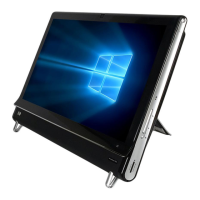
Why does my HP Desktop reject or stuck 8 cm optical discs?
If 8 cm optical discs are rejected or become stuck in the drive, make sure to insert the disc in the center of the slot, rather than towards the top or bottom.
| Processor cache | 2 MB |
|---|---|
| Processor cores | 2 |
| Processor family | Intel® Core™2 Duo |
| Processor frequency | 2.1 GHz |
| Processor cache type | L3 |
| Processor manufacturer | Intel |
| Processor front side bus | 800 MHz |
| Chassis type | All-in-One |
| Display included | Yes |
| Cabling technology | 10/100/1000Base-T(X) |
| Networking features | Gigabit Ethernet |
| Graphics card family | NVIDIA |
| Floppy drive installed | No |
| Parallel ports quantity | 0 |
| Maximum graphics card memory | - MB |
| Compliance industry standards | IEEE 802.3, IEEE 802.3u, IEEE 802.3ab |
| Number of processors installed | 1 |
| Internal memory | 4 GB |
| Memory clock speed | 1333 MHz |
| Internal memory type | DDR3-SDRAM |
| Maximum internal memory | - GB |
| HDD interface | SATA |
| Optical drive type | DVD Super Multi |
| Discrete graphics card model | NVIDIA GeForce 200 |
| Operating system installed | Windows 7 Professional |
| USB 2.0 ports quantity | 5 |
| Ethernet LAN data rates | 10, 100, 1000 Mbit/s |
| Product color | Black |
| Country of origin | China |
| Depth (with stand) | 72 mm |
|---|---|
| Width (with stand) | 579 mm |
| Height (with stand) | 447 mm |
| Weight (with stand) | 11500 g |
Describes the HP TouchSmart 9100 Business PC's key features and hardware capabilities.
Lists items included and required for setup and connectivity.
Lists the items included in the computer package for setup and use.
Details specific cables required for connecting TV tuner functionality.
Details mounting adapter and lists essential cables not included.
Identifies and describes components on the front and right side of the PC.
Identifies and describes components on the lower-left side of the PC.
Instructions on how to remove and replace the computer's connector cover.
Identifies and describes ports and connectors on the back of the PC.
Explains the meaning and function of various LED indicators on the computer.
Guides on plugging in the power source and organizing cables.
Setting up the stand and adjusting its angle and swivel.
Explains how to connect and use the keyboard and mouse.
Details setup and usage of the optional wireless keyboard and mouse.
Information on compatibility when adding external hardware to the PC.
Steps to check the operating system architecture (32-bit or 64-bit).
Instructions for using the CD/DVD/Blu-ray drive for playback and recording.
Guides for setting up wireless or wired network connections to the Internet.
Steps for setting up and connecting to a wireless home network.
Steps for setting up and connecting to a wired home network.
Information on connecting and using Bluetooth-enabled devices.
Overview of using Windows Media Center for TV viewing and recording.
Steps to watch and record TV programs using Windows Media Center.
Guides for connecting TV antenna or cable provider to the computer's TV In.
Instructions for connecting a set-top box for TV input via S-Video and audio.
Steps to complete the Windows Media Center setup for TV tuner configuration.
Details the various speaker options supported by the HP TouchSmart PC.
Instructions for connecting 2.0 and 2.1 powered analog speakers.
Steps to connect and enable digital speakers or audio receivers via SPDIF.
Guides on adjusting speaker volume using system controls or software.
Connecting headphones and using built-in microphones.
Using headsets and connecting MP3 players.
Guides for connecting printers via USB, wirelessly, or with parallel adapters.
Details how to configure power settings like Sleep and Hibernate modes.
Instructions for adjusting screen brightness and display settings.
Guide on installing a security lock to protect the computer from theft.
Steps for safely cleaning the touch screen for optimal performance.
Ergonomic guidelines for comfortable and safe use of the HP TouchSmart PC.
Information on responsible disposal of electronic waste and HP's recycling program.
Introduction to the HP TouchSmart software suite and its capabilities.
Steps to launch the HP TouchSmart software from the Windows desktop.
Explains how to navigate and interact with the HP TouchSmart interface.
Using touch gestures for scrolling, browsing, resizing, and input.
Using touch, keyboard, mouse, or remote control to navigate Windows desktop.
Using the onscreen keyboard for text input and handwriting recognition.
Overview of the large and small tiles on the HP TouchSmart homepage.
Steps to create, add, view, hide, and delete tiles on the homepage.
How to customize the appearance of HP TouchSmart tiles.
Accessing tutorials and using the browser for live content.
Information on subscribing to and viewing RSS feeds.
Overview of viewing, editing, and sharing photos with HP TouchSmart Photo.
How to view photos and create photo slideshows.
How to hide photos from appearing in the HP TouchSmart Photo tile.
Instructions for creating CDs or DVDs of photos.
Using Canvas for collages and managing music collections.
Steps to transfer music and use songs from iTunes.
Finding and adding missing album art or creating your own.
Creating playlists and accessing the Music Store.
Instructions for creating CDs or DVDs of music or photos.
Using HP TouchSmart Video to create, play, and upload videos.
Information on the built-in webcam and microphones and their usage.
Steps to record video and take snapshots using the webcam.
Instructions for recording, managing, and editing videos.
Organizing video playlists and transferring videos to the computer.
Steps to upload videos from HP TouchSmart to YouTube.
Using CyberLink DVD Suite to record videos to disc.
Steps to set up and conduct video chats and conference calls.
Applying visual themes to movies using the Video tile.
Managing schedules and creating text/voice notes.
Creating, recording, and deleting notes.
Setting up weather forecasts and personalizing the clock.
Using the Recipe Box for interactive recipe guidance and voice commands.
Using Twitter and watching Netflix content.
Watching local TV and cable content with a TV tuner.
Transferring phone data and updating system software.
Methods for repairing problems caused by operating system or software issues.
Common methods for resolving software problems, including restarting.
Steps to update or roll back device drivers for hardware.
Restoring computer configuration to a previous state using restore points.
Reinstalling factory-installed software or drivers using Recovery Manager.
Instructions for creating backup discs of important personal information.
Procedure to create recovery discs for restoring factory settings.
Erasing and reformatting the drive to reinstall the OS and programs.
Performing system recovery from an image or using created recovery discs.
Detailed steps to create a set of system recovery discs.
Requirements and media types for creating recovery discs.
Order of preference for performing system recovery.
Performing system recovery via Start menu or system startup.
Procedure for performing system recovery using created recovery discs.
Resources for further troubleshooting and support.
Using HP Support Assistant for PC maintenance and problem resolution.
Using built-in Windows 7 tools to troubleshoot common computer problems.
